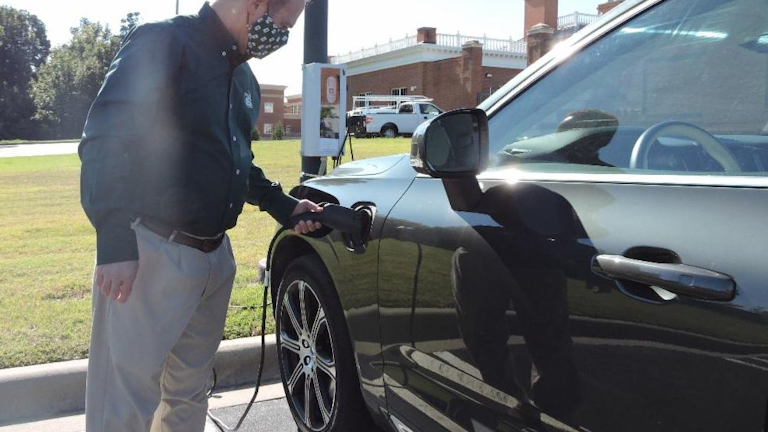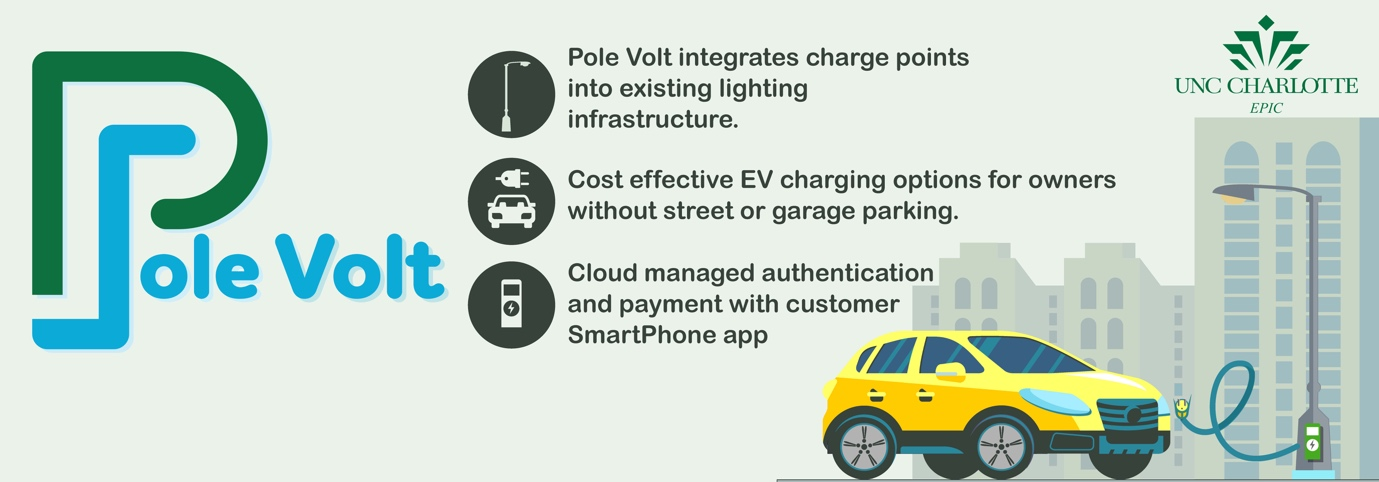
A Storm Is Coming, and It’s Named EV
According to Mike Rowand, director for technology development at Duke Energy, it could soon be “spreadsheet” buying of electric cars, trucks, and buses by fleet owners wanting to connect massive new electric vehicle (EV) charging infrastructure to your transmission and distribution (T&D) system.
Rowand presented his observations about the coming storm in his presentation ‘What’s Coming in Electric Transportation?’ at a spring 2019 meeting of the Center for Advanced Power Engineering Research (CAPER), held in March of that year.
CAPER is a three-university consortium consisting of the University of North Carolina (UNC) Charlotte, Clemson University, and NC State. The universities form multi-campus teams to tackle applied research problems selected and funded by CAPER industrial members. CAPER has three full members, Duke Energy, Siemens, Savanah River National Laboratory (SRNL), and one associate member, Dominion Energy.
“The utility industry is acutely aware that we are on the front line of supplying energy for the transportation revolution called EVs,” said Klaehn Burkes, chairman of the CAPER Industry Advisory Board. Burkes, who works in the digital transformation directorate at the SRNL, added, “That’s why in 2020, CAPER funded our first project to study incorporating EV charging into utility integrated resource planning to get ready for a world where electricity — not gasoline or diesel fuel — powers our personal mobility.”
The project, Incorporating EV and EV Charging Stations into Integrated Resource Planning, is led by Dr. Linquan Bai of UNC Charlotte and Dr. Johan Enslin of Clemson. Duke Energy and Dominion Energy support the project with data about their distribution systems and the latest news about fleet charging infrastructure, amounting to megawatts of new load.
Therein lies both the opportunity and the challenge for the nation’s electric utilities. The opportunity is clear — the single largest energy sector remaining that is dominated by the direct conversion of fossil fuels to mechanical energy is transportation. Converting this to electricity would provide immediate reductions in carbon dioxide, with much more reduction possible as time goes on. Add to that a benefit to utility customers from the increase in utilization factors for many capital items. Finally, plug-in EVs, whether cars, buses, or trucks, are essentially mobile energy storage systems. If vehicle-to-grid integration evolves as its supporters envision, there is enormous potential for EVs to help solve the problem of adding more renewable energy to the grid.
And therein lies the challenge because much more investment will be needed. It is not just about the increasing number of EV charging loads, the incremental size of each load is also exponentially increasing. Level 2 chargers up to 19 kW, often less, are the principal resource for topping off thirsty plug-in vehicles. But these days, that amount of utility service is often not good enough for long-range sedans plugging into dc fast chargers. And it’s a drop in the bucket compared to that needed by fleets of buses, delivery trucks, and long-haul trucks as they join the mix. Duke Energy’s Rowand reminded the audience of the full potential of the transition before the industry when he asked, “Will a 50-kW gas station convert 10 gas pumps to 350-kW charging stations? That question is getting utility T&D planner’s attention.”
But what about the many drivers in the United States that could benefit from owning an EV but have no place to charge at work or home? The National Renewable Energy Laboratory (NREL) estimates that 36 non-residential Level 2 chargers are needed for every 1000 EVs. Where will this new infrastructure be installed and at what cost?
Dr. Robert Cox is the lead principal investigator for a program funded by the Vehicle Technologies Office of the U.S. Department of Energy (DOE) that is studying a possible solution for this significant impediment to the adoption of EVs. Cox, a professor of electrical engineering at UNC Charlotte and the associate director of EPIC, has teamed with Eaton Corp., Duke Energy, and Centralina Regional Council to demonstrate a simple, cost-effective upgrade to a ubiquitous city streetlight.
Called Pole Volt, the system uses a soon-to-be-released smart circuit breaker developed by Eaton to allow seamless customer authentication via cellular modem to control a built-in Level 2 charger so that an EV can receive charge from existing infrastructure available on public streets or in parking lots.
This technology’s potential benefit is that it could allow city streets and dense housing developments to electrify transportation wherever existing lighting infrastructure already exists. For example, EPIC faculty and staff compete for three chargers in a UNC Charlotte parking garage with little prospect of new EV charging being added because of the high cost to upgrade existing electrical service.
By adapting existing lighting infrastructure, EV chargers could multiply much more quickly and thus encourage rapid increase in consumer adoption of EVs, which has been forecast but is yet to happen.
 Figure 2. Pole Volt, conceptually, will reduce the cost of adding charging infrastructure for the large numbers of owners that don’t have home/work charging options now.
Figure 2. Pole Volt, conceptually, will reduce the cost of adding charging infrastructure for the large numbers of owners that don’t have home/work charging options now.
The Pole Volt project is in its second year. The third year will see a public trial on Charlotte city streets. To prepare, Cox said: “We have installed Pole Volt in a couple of locations on the campus of UNC Charlotte and already EV owners are taking a charge from a light pole where none was planned before.”
Client transaction management is handled using a cloud-based platform. Individual clients engage with the system using a smartphone. As part of the public trial, students at EPIC are developing an enclosure in partnership with Eaton for the system to satisfy reliability and safety standards, including UL listing.
 Figure 3. Dr. Rob Keynton, dean of the William States Lee College of Engineering, connects his plug-in hybrid electric vehicle to a Pole Volt charger (background) as part of early testing before a year-long public trial in Charlotte, North Carolina.
Figure 3. Dr. Rob Keynton, dean of the William States Lee College of Engineering, connects his plug-in hybrid electric vehicle to a Pole Volt charger (background) as part of early testing before a year-long public trial in Charlotte, North Carolina.
